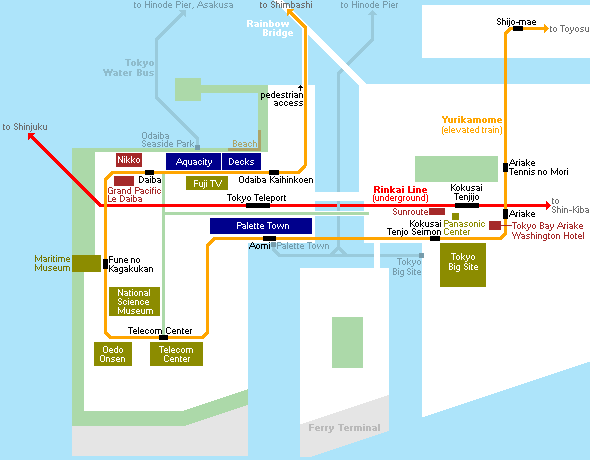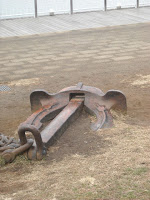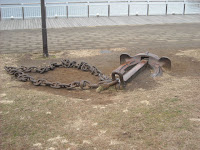Yesterday, really for the first time in 3 months, the lower elevations of the Kanto region saw winter-like conditions-- snow, wind, and overcast skies. Whilst snow has fallen twice this winter in Southern Saitama before yesterday, it has been that type of wet snow which yields to clear skies by lunchtime. However, this 'storm' has lasted two days, bringing snow, rain, and colder temperatures. Indeed, I set out from my flat mid-morning into a very light snowfall. In preparation for using my camera outside, though, I decided to utilize my underwater housing not only to avoid water damage but also so snapping photographs wouldn't require continually removing and replacing my thick winter gloves. Underwater housings are constructed with neoprene glove-wearers in mind, so the shutter button is controlled by a lever, and the setting buttons are large and easily pushed. Something tells me that Ikelite didn't plan for this kind of use when they were developing scuba diving-friendly housings!
Odaiba is well known for its futuristic-styled buildings and unmanned monorail transportation system, but there is also historical significance to the artificial island. Built as a series of manmade island forts for defensive purposes during the Edo period (1603-1868), the islands were eventually joined by landfill projects to produce today's existing area. As many people may know, Japan experienced great economic growth in the 1980s, during which great plans for developing Odaiba into a futuristic residential and business district. However, these plans were shelved following the burst of the bubble economy in the early 1990s, and the existing developments did not take until the late 1990s, when a few hotels, shopping malls, and the monorail system opened.
Walking around other areas of Tokyo can seem a bit schizophrenic, as newer neighborhoods planned for pedestrian and motorized traffic co-exist with the older pedestrian and horse carriage areas. The recent development means modern-day city planning measures have been put in place, resulting in a pleasant area for a stroll with ample pedestrian walkways/flyovers, green park areas, and readily-accessible public transportation.

(Map from Japan Guide)
Odaiba is quite large, so taking in all the sights would undoubtedly be a long, exhausting day, even in good weather. My chosen route for the day was as follows:
Shinbashi-- Alighted from the JR Yamanote line and transfered to the yurikamome monorail, which gave me some great views of Tokyo Bay, plus I got to experience the interesting curlyque structure of Rainbow Bridge.
My first stop was Odaiba Kaihinkoen, which is a beach complete with sand, boardwalk, and restaurants. As it is the middle of winter, I had the boardwalk to myself for most of my stroll.

A view of Rainbow Bridge and Central Tokyo.

The beach area at Odaiba Kaihinkoen.

Odaiba Kaihinkoen has a nice boardwalk, which stretches quite far and is ideal for a traffic sounds-free stroll in Tokyo.

This is the Fuji TV headquarters-- the golden ball is an observation deck, and Aqua City Odaiba, a shopping mall. You can take tours of Fuju HQ, but I saw the hoardes of people and the ubitquious staff with plastic megaphones making endless (some being the pointless type unique to Japan) announcements, and steered clear of the self-guided tour option due to a combination of having a low frustration tolerance and the foresight of 4 years' experience dealing with local crowds in public places.


You can see some quite large anchors off the boardwalk, and there is also a Maritime Museum which is supposed to be good for the sea-oriented visitors.

Did I take a wrong turn? Nope, there's a Statue of Liberty at Odaiba too.

The Statue of Liberty, Rainbow Bridge, and Central Tokyo.

Hotel Nikko Odaiba, a seaside accommodation.

This is the great staircase leading up to Fuji TV headquarters.

The Telecom Center. It was refreshing to see buildings in a shape/color other than institutional white/grey.
I strolled to the Venus Fort shopping mall as I heard about the European-looking architecture inside, and sure enough I thought I had accidentally took another wrong turn and ended up at the Villaggio in Doha (but there's no canal in this one).

There's a Church Plaza...


European-looking pathways, complete with painted sky...

And even a Fountain Plaza.
Finally, the Venus Fort is near the Toyota Mega Web, which is a huge PR endeavor on Toyota's part. The Mega Web has a large showroom with the latest domestic car models-- which you can take photographs of and even climb in and out of freely (including the Lexus models, the most expensive being almost Y10 million, or roughly USD$120,000!), car accessories, and future technologies being developed. There is also a test driving track, but you've got to have a Japanese driving license. In a nod to the past, Toyota has its History Garage, a pretty cool car museum with old Japanese and foreign cars, and the Universal Design Showcase to introduce and explain the evolution of automobile universal design features such as gauge location, steering wheel accessory buttons, steering column adjustment/design, back bumper sensors, and internal car sounds (seat belts, turn signals etc.).
Inside the History Garage...



Yep, that's a Delorean.



The model showroom, split by vehicle type (SUV, sedan, compacts etc.)


The Lexus wing, which has its own security staff..

And the Universal Design Showcase.
There are lots of other attractions at Odaiba, including the Oedo Onsen, the National Science Museum, the Future Museum, the Panasonic Center (Panasonic's PR venture, which, from description, sounds quite similar to Sony's center at Ginza), and Tokyo Big Site. Odaiba is definitely a must-see for tourists and residents alike, as the spacious layout lends itself nicely to maintaining one's space and finding some peace in a crowded city (country, for that matter), and tourists can see that not all of Tokyo is drab grey buildings, traffic congestion, and power lines.







No comments:
Post a Comment